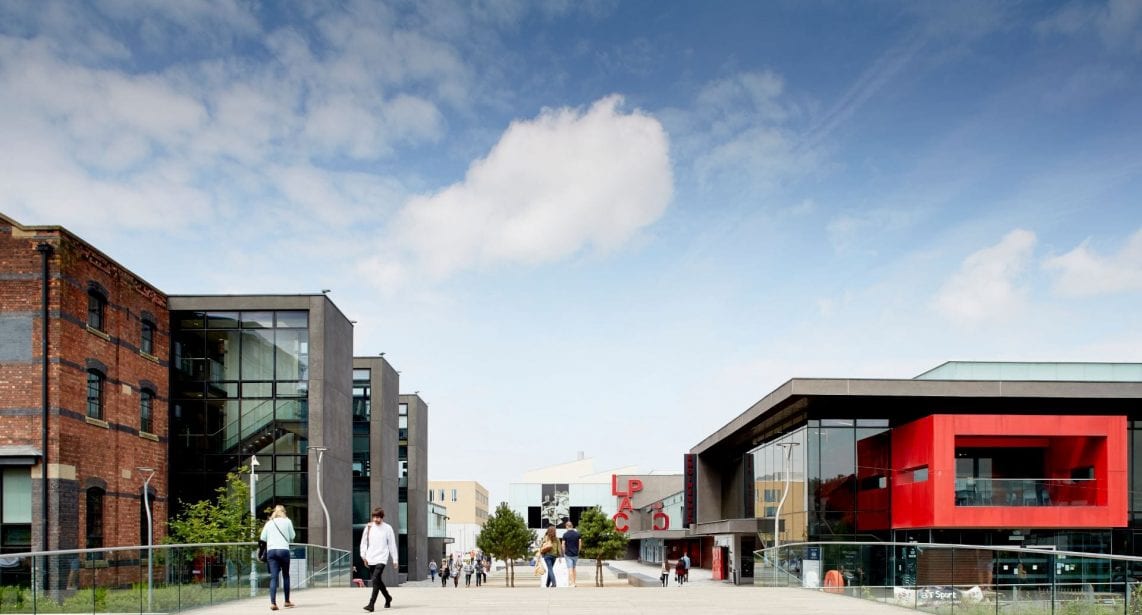My work on 23 Things for Digital Knowledge and my growing interest in how to be an effective and engaging teacher in online spaces led me to attend the Medieval Academy of America webinar, Online Teaching and Medieval Studies yesterday. This post aims to record a few brief notes and reflections from that event.
The first speaker, Dr Leah Shopkow, opened her talk with a reflect on a famous image of the medieval classroom. She pointed out that not all of the students in the painting below have books, and then said something which struck me as both true and incredibly useful:

Our pedagogy has developed in an environment of information scarcity.
I heard this and immediately thought of the way lectures can be an effective means to convey knowledge but don’t necessarily allow for differences in the way this knowledge is received. But as Dr Shopkow pointed out, in an online environment, we want our students to be active–to do, not just to listen. In this environment, she emphasized the importance of backward design as a key feature of planning successful online teaching: starting from the point of what we want our students to know, and what we want them to be able to do.
The second speakers, Dr Olena Zadko and Dr Susan Ko, spoke about OERs in teaching, a subject I wrote about for Thing 12. They pointed out that OERs should enhance and not replace resources currently used in teaching, and suggested using a course planning instrument to properly integrate it into course design. One point I found especially interesting was that they stressed the need to keep hard copy access opportunities open: in their experience, students of all ages and backgrounds like materials they can easily download and read offline.
The question period that followed raise a few points I know I will return to in the coming months, namely:
- Working my way through a two week asynchronous course on using OERs in teaching
- Taking an approach to offering support to faculty that is targeted and coordinated with others
- emphasizing to faculty and other teaching staff that they should ALWAYS USE A LINK NOT A PDF in sharing library material with students. (Librarian rant on: my dear academic colleagues, if you send your students a PDF, rather than fifty downloads as your students access the article, journal usage stats will only show one download: yours. Especially in the current and future financial environment, usage stats are how libraries decide to keep or discard subscriptions. Help us help you by ensuring that we have accurate data. Please and thank you!)
- designing in accessibility from the beginning
- paying attention to digital drift! As one of the speakers pointed out, good scaffolding can actually increase the amount students pay attention in a digital environment
The second half of the workshop was devoted to ‘tool talks’; presentations on the use of specific OERs in medieval studies teaching. The first, from Dr David Wrisley, talked about teaching the works of Christine de Pisan through story maps; from it I learned that KnightLab has a lower entry barrier to entry that ArcGis; it would be fun to play around with both.
The second speaker, Dr Nicholas Paul, spoke about using podcasting in his graduate teaching, which interested me greatly having just written about podcasts for Thing 14. As I found in my post, Dr Paul pointed to the popularity of podcasting, and the fact that students are very likely to already be familiar and engaged with podcasting landscape. Dr Paul and the other speakers emphasized that activities like podcasting are key from a career development perspective, giving students a final product that they can show potential employers, and developing their skills in settings outside of research. He also returned to the point about accessibility as feature not a tack-on, emphasizing that transcripts should be provided to enable access for D/deaf and hard of hearing listeners.
The third talk, from Dr Liz Lastra, discussed the virtual exhibition platform Artsteps, which I excitedly wrote to colleagues who work with art history, material culture, and conservation and restoration this morning. Artsteps allows students to create an interactive online exhibition. As a wonderful library colleague pointed out this morning, it might also be possible to use it in a library context to introduce our space and resources. I can see it leading to exciting projects in art history, material culture studies, conservation and restoration, fine art…
The final question and answer period emphasized the need to be flexible with use of online tools, and to build in points that allow students to engage despite glitches and lack of access to tech. One of the speakers also made a broader point about using digital pedagogies to teach students to be safe and responsible online: for instance, teaching them how to create materials that are not attached to their real name or personal information, helping them understand how to download and save their creations as technology shifts and platforms update or become obsolete, and also teaching them how to remove things from the internet.
The benefit of doing a big reflective writing project like 23 Things for Digital Knowledge is that is has enabled me to take stock of what I know and what I don’t know about tools for teaching and learning online. Because of previous Things such as OERs and podcasting, I was able to get more out of this wonderful workshop than I might have done if I hadn’t began this project. Looking forward to the next Thing!
